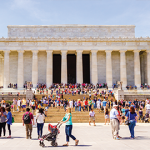
Ditty_about_summer / shutterstock.com
Each fall, the ACR/ARHP Annual Meeting takes place in a major U.S. city. More than 15,000 people fill the cavernous halls of the area convention center and nearby hotels to attend scientific and educational sessions, scan the latest data on posters and mingle with colleagues at the annual Presidents’ Reception.
What most attendees may not realize is the complexity of logistics and the juggling of myriad moving parts that go into staging a successful medical meeting of this size, year in and year out. For 43 years, Ron Olejko has managed the smooth planning and execution of the ACR/ARHP Annual Meeting and other educational meetings throughout the year. He will retire from the ACR this summer to enjoy travel and other leisurely interests, and he looks back with pride on his decades of service to the organization and his legacy, the Annual Meeting, a major event attended by thousands of rheumatologists from more than 100 countries each year. At the 2017 Annual Meeting in San Diego, Mr. Olejko was given the Mark Andrejeski Meritorious Service Award honoring his decades of service to the ACR and the ARHP.
“Ron has always had member service at the top of his list. He paid attention to details that helped him form a special bond with many, many members. He was somewhat of the office historian as of late and contributed greatly in that regard,” says Mr. Andrejeski, the ACR/ARHP executive vice president. “He was great at remembering the little details of someone that made them feel special. He also has a wonderful sense of humor and has, on many occasions, pulled a little trick or two on volunteers and staff that let someone know he cared. Using humor to establish relationships is a gift, and he does that well. Finally, Ron always had the best interests of the ACR in mind and was a wonderful representative of the College. He will be missed by many and will always be special to me. With his departure, I am now the oldest staff member, I believe. So if for no other reason, I wish he would stay around a bit longer.”
Organization Skills
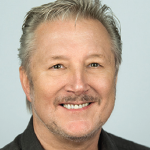
Ron Olejko
Mr. Olejko grew up in a large, close-knit, Polish Catholic family, in Lorain, Ohio, a small industrial town 30 miles from Cleveland on the shores of Lake Erie. As a high school student, he often went to downtown Cleveland to savor the bustling, urban environment that was a marked contrast to Lorain. Early on, Mr. Olejko discovered that he loved travel, big cities and organizing trips.
“I didn’t have a clue what I wanted to do with my career. Ideally, I thought that after high school, I’d backpack across Europe,” he says. It was 1968, and he worried that if he didn’t enter college right away, he would be drafted. He enrolled in Baldwin Wallace College in Berea, Ohio. Before starting college, he took his first solo trip to New York City.
“I read all the guidebooks on New York. I read The New York Times when I was in high school, not so much for the news stories, but for the information about life in New York. Even before I had been there, I realized that I knew New York. I am a savant when it comes to maps,” Mr. Olejko says.
He studied business and accounting in college, then switched his major to speech. “If I had had wise guidance counselors in high school, they would have sensed I had an aptitude for meeting planning and organizing. At the time, I didn’t know it was a career path,” he says.
After graduation, Mr. Olejko moved to New York. He found a part-time job selling maps at a Rand McNally store and held temporary typing jobs. He shared a railroad apartment in Astoria, Queens, that “had a slanted floor and an old-fashioned, pull-chain toilet. You had to hold an umbrella over your head when you used it,” he jokes. “But I was really living like a king,” attending Broadway shows and, in 1974, appearing as a contestant on the TV game show, The $10,000 Pyramid, with actors Anne Meara and Larry Linville.
ACR Career Begins
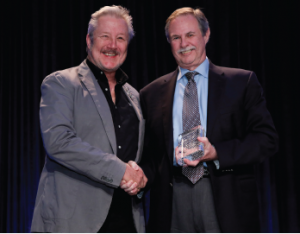
At the 2017 Annual Meeting in San Diego,
Ron Olejko (left) received a Meritorious Service Award from Mark Andrejeski (right).
In January 1975, Mr. Olejko found another temp job at the Arthritis Foundation in Manhattan. At the time, the Arthritis Foundation, the American Rheumatism Association (ARA) and Allied Health Professions (AHP) were one organization. The ARA separated to form the ACR in 1986. The AHP became the Arthritis Health Professionals Association and later merged with the ACR to become the Association of Rheumatology Health Professionals (ARHP). Mr. Olejko was hired to type and format the AHP’s newsletter. Then, Lynn Bonfiglio, ARA executive director at the time, offered him a full-time administrative assistant job.
“Lynn gave me a lot of freedom, and gave me more and more responsibility. I was calling the hotels where we were planning to hold meetings, and she could see that I knew how to organize these events. One of my first trips was a rheumatology fellows conference in Scottsdale, Ariz., in 1976. I worked my a** off, but I was able to go see the Grand Canyon,” he says.
‘I’ve loved my career. I take care of everyone & help them with their problems, & that makes me very happy.’ —Ron Olejko
Beginnings: The Annual Meeting
In 1976, Mr. Olejko applied his natural aptitude for meeting planning to help Ms. Bonfiglio organize his first Annual Meeting at Chicago’s Hyatt Regency Hotel.
“In those days, the Annual Meeting was much smaller [fewer than 1,500 total attendees]. It was self-contained in one hotel tower. I worked in the on-site office, and I didn’t really know what I was doing,” he says. He typed the program book, which contained the educational session and abstract titles, on an IBM Selectric typewriter—and he still has a copy. Mr. Olejko faced his first Annual Meeting logistics jam when the sold-out hotel’s registration system lost many attendees’ reservations. “There were about 50 doctors with no rooms. I knew enough to call the Chicago Convention and Visitors Bureau and ask them if they could help me find rooms for these people. That part of the job came naturally for me.”
What would evolve into a huge, global meeting grew slowly, he says.
“There were no faxes, no emails and no computers then. Abstracts were printed on sheets with blue-line squares. There were no exhibitors at first. The 1979 Annual Meeting in Denver was the first one where we had exhibitors and posters. They had eight tabletop exhibits and 10 double-sided poster boards. None of the doctors then wanted to present their data as a poster. That came later.”
In the mid-’70s, the organization relocated to Atlanta. Although Mr. Olejko was reluctant to leave New York City, Ms. Bonfiglio offered him a job as executive director of the AHP. “I knew nothing about Atlanta or the South. It was a decision that I really struggled with, but professionally, I wasn’t ready to start all over again,” he says. “Lynn was an incredible mentor and great at customer service to the members. She gave me a lot of freedom to mature and evolve in my job, and for that, I am so grateful.”
On-Site Ombudsman
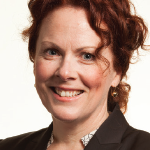
Ms. Hoyne
In 1986, the ACR asked him to move to a full-time role organizing all the meetings for the newly independent association. “Over all these years, I have represented the ACR to every major city’s convention and visitors bureau and all the major hotels and convention centers. I have been the on-site ombudsman for everybody associated with our meetings. I’ve loved my career. I take care of everyone and help them with their problems, and that makes me very happy.”
During his decades as the planner of all ACR’s meetings—large and small—crises have been astonishingly few, a credit to Mr. Olejko’s sharp organizational skills and attention to detail. He negotiates major contracts with convention centers, hotels and other venues. And he is especially proud that he personally plans the annual Presidents’ Receptions, which have taken place on the USS Midway aircraft carrier in San Diego, at the National Portrait Gallery in Washington, D.C., and many other special venues. Attendees don’t see the immense effort behind the staging of an Annual Meeting, and that’s the way Mr. Olejko likes it.
“One of the things I excel at as a meeting planner is that you have to make quick decisions, and very quickly absorb what is happening around you. You can’t make decisions if you’re afraid of making the wrong decision,” he says. “We have been lucky to not have too many issues.”
Notable mishaps include a power surge at the New Orleans Convention Center that was reported to him as a fire in a session room. “I had to get on a chair and yell out to everyone that the session was canceled, and we’d have to reschedule,” he recalls. At the 1987 Presidents’ Reception in Washington, a horse ridden by an actor dressed as George Washington heeded the call of nature in the middle of the ballroom.
One famous natural disaster put well-laid plans for an educational symposium in jeopardy. Hours after Mr. Olejko arrived to prepare for the 1989 event in San Francisco, a major earthquake rattled the Bay Area and halted the World Series. “There were no cell phones then, and I went to a pay phone on the street trying to get hold of people. Luckily, staff and attendees were flying in later that week, but we had no power in downtown San Francisco for a week,” he recalls.
Negotiating contracts on behalf of the ACR is one of Mr. Olejko’s sources of pride.
“I’ve always been a savvy negotiator, maybe because I’m personally frugal. I’m always looking for a better deal, and I go behind the scenes to find it,” he says. “Early on, I had to become a contract expert for the Annual Meeting and all the smaller meetings. Hotel contracts were all a hodgepodge when I started.” He honed his contract-writing skills by studying legal books and teaching a class with a colleague at the University of Georgia extension program. “It was very intimidating at first. But eventually, when I started using my own contracts, I was surprised that hotels would agree with what I had written. When it was my contract, I felt sure what was in it.”
“Creating the Annual Meeting requires thousands of details coming together, and I’ve had the privilege of watching Ron not only coordinate all these details, but also implement them flawlessly,” says Donna Hoyne, ACR vice president of education and Mr. Olejko’s longtime colleague. “Ron’s work on the Annual Meeting begins years before anyone else is thinking about it. City and hotel contracts are often completed 10 years in advance. Working with the city to make sure our Annual Meeting attendees have a great experience is always Ron’s top priority. He’s not only a trusted colleague, but a friend. Ron is going to be truly missed.”
The biggest changes Mr. Olejko has seen in his long tenure with the ACR include the rise in attendance and more complex regulations on industry sponsorships. Mr. Olejko has kept voluminous documents, which he calls his “Need to Know Encyclopedia”—a trove of information for planning the Annual Meeting. He shares best practices with other planners in his professional niche at yearly gatherings of the Medical Meeting Round Table.
Mr. Olejko says he is retiring from a career he has truly enjoyed.
“In some ways, I’m sorry I didn’t retire at the end of last year, as I’ve already been working on the 2018 Chicago meeting, even though I won’t be there,” he says. “When October rolls around, and I’m not there in Chicago, I will be melancholy. I love being at the meeting.
“How did I luck into a career that fit me so well? I was in the right place at the right time. I’ve contributed to the success of the ACR and seen so many changes. The ACR has been really good to me, and I’m grateful for it.”
Susan Bernstein is a freelance medical journalist based in Atlanta.
Colleagues’ Impressions of Ron Olejko
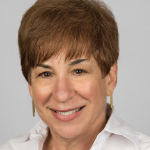
Ms. Diamond
“As someone who’s worked with Ron for many years, in some ways I’m even more amazed than most people at his ability to orchestrate this huge meeting with its countless moving parts. This is somebody who wears his heart on his sleeve; he can go from feeling completely laid back to apoplectic—and either way, you know it. Yet when it comes to negotiating with the convention executives, he’s able to put on his poker face and get the absolute best deal for the ACR. Just like our members and just like all the folks who work at the convention centers and hotels, Ron’s coworkers love him. He’s funny, fun, up for anything and unforgettable!” —Jane S. Diamond, MPH, Managing Editor, Arthritis & Rheumatology
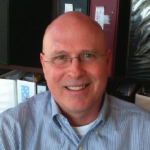
Mr. Cherry
“There are so many experiences and ‘Ronisms’ over 28 years, it is hard to pick one out. One of the greatest things about working with Ron over the years is his ability to delegate and trust his strategic partners, along with his loyalty to them. His recurring statement after disseminating important information to his team is: ‘Questions? You know what to do.’” —Jim Cherry, Vice President, Brede/Allied
